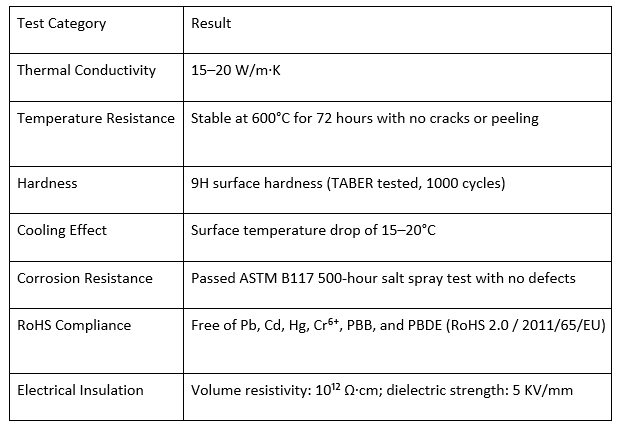In September in Chengdu, the 2nd Golden Panda Awards arrived as scheduled.
A total of 27 awards across four categories—film, TV drama, documentary, and animation—plus the Special Jury Awards, will be announced in this “Land of Abundance”. Works and creators from diverse cultures and styles once again allow the world to witness the charm and potential of images as a “language of empathy”.
As an international film and television cultural award that takes audio-visual works as its carrier, the giant panda as its cultural symbol, and the promotion of building a community with a shared future for mankind as its purpose, what is the caliber of the Golden Panda Awards?
Since the first international film festival in the world—the Venice International Film Festival—was held in 1932, nearly a hundred years have seen the emergence of thousands of film festivals worldwide. Whether it is Cannes in France, Berlin in Germany, Toronto in Canada, or Beijing, Shanghai, and Hong Kong in China, each distinctive film festival is not merely a showcase for the latest cutting-edge achievements of the film industry; it is also a grand feast for the exchange of human light and shadow art.
Different from world-renowned international film festivals that focus more on artistic, commercial, and industrial exploration, the Golden Panda Awards has aimed to build a “golden bridge” for cultural exchange and mutual learning from the very beginning.
The Golden Panda Awards sets no barriers and makes no distinctions between genres, allowing different cultures to meet equally in the light and shadow. For this year’s awards, works from 126 countries and regions were submitted, totaling 5,343 entries—among which 3,910 were foreign works, accounting for 73.2%.
Jurors from all over the world, including Europe, North America, Oceania, and Southeast Asia, selected entries based on criteria such as consolidating the consensus on building a community with a shared future for mankind, promoting the common values of humanity, and reflecting the shared aesthetic pursuit of mankind, thus demonstrating the original aspiration of “appreciating the beauty of each to achieve the beauty of all”.
The number of participating countries and regions, the proportion of overseas works, and the diversified evaluation system all embody the core spirit of the Golden Panda Awards: “appreciating the beauty of all and living in harmony with differences”. This is evident from the nomination list—there are not only Hollywood blockbusters like Oppenheimer directed by Christopher Nolan, but also Snow Leopard by the late Chinese Tibetan director Pema Tseden; not only Nezha 2 (a work that went global from Sichuan), but also The Last Dance which broke the box office record of Chinese-language films in Hong Kong.
As Chen Kaige, Jury President of the 2nd Golden Panda Awards, put it: “Whether it is a poetic expression embodying Oriental aesthetics or a pioneering narrative exploring the digital age, as long as a work carries reflections on the destiny of all mankind, it deserves to be seen by the whole world.” This perfectly captures the essence of the awards.
Compared with film festivals that focus on the results of selection, the Golden Panda Awards places greater emphasis on the exchange process itself. For this year’s event, three supporting activities will be held in Chengdu: “Let’s Watch Movies Together”, “Panda Takes You to Look Around the World”, and “Face to Face with Pandas”.
“Face to Face with Pandas” will take place at the Chengdu Dujiangyan Panda Valley, which features an ecological setting of “semi-wild rearing environment” and “restored original habitat”, allowing guests from the East and West to experience the charm of giant pandas up close. The “WLet’s Watch Movies Together” screening event will show more than 150 films in 15 distinctive cinemas, 10 urban landmarks, and 5 well-known universities in Sichuan. Simultaneously, screenings will also be held in over 20,000 villages (communities), bringing movies truly into every household.
Notably, the Golden Panda Awards Ceremony will once again be held at the Tianfu International Conference Center by the Qinhuang Lake. One month ago, the 460-meter-long “Eaves of Tianfu” at the center witnessed athletes from 116 countries and regions around the world embark on a journey of transcending themselves and exchanging ideas at the World University Games. Now, this largest single wooden structure in Asia will witness how international film and television professionals build consensus through dialogue, enabling different cultures to meet, collide, and resonate in the light and shadow.
Chengdu has long been a hub for East-West exchange since ancient times. The Daci Temple was once the starting point of Monk Xuanzang’s journey to the West to seek Buddhist scriptures; the millennium-old Jinjiang River witnessed Marco Polo’s travels in the East; and today’s streets and lanes of Chengdu interpret the myriad scenes of Chinese modernization through their “comfortable and leisurely lifestyle” (referred to as “bashu life” in local dialect).
The Golden Panda Awards has chosen the giant panda—a symbol of friendship with global recognition—and endowed it with the special symbol of “gold”. When film and television professionals from various countries gather in Chengdu with their unique cultural imprints, the “caliber” of the Golden Panda is revealed in each exchange and mutual learning—it not only fosters the beauty of harmony in diversity between the East and the West, but also cherishes the precious connection of shared human hearts.
(Reporters: He Shaoqing, An Yingzhao; China News Service)

Jackie Chan arrives at the Golden Panda Awards ceremony with an adopted panda doll. Photo by Liu Zhongjun, reporter of China News Service.

On August 29, 2025, in Chengdu, Sichuan, citizens participated in the “Let’s Watch Movies Together” screening event of the 2nd Golden Panda Awards. Photo by Wang Liwen.

On August 7, 2025, the opening ceremony of the 12th World Games was held in Chengdu, Sichuan. Photo by Zhang Lang, reporter of China News Service.









